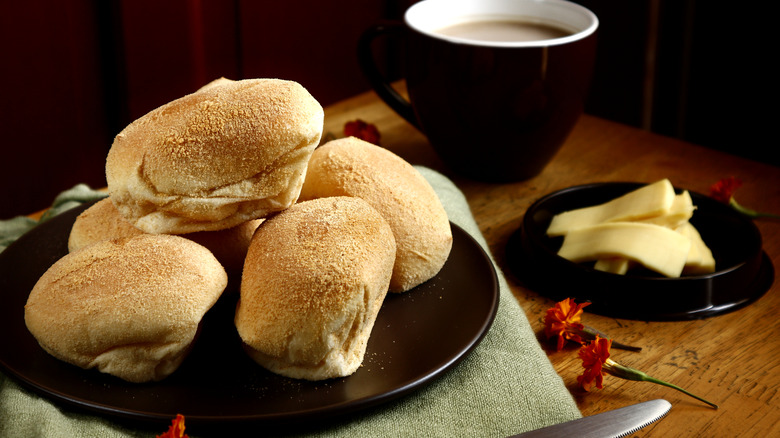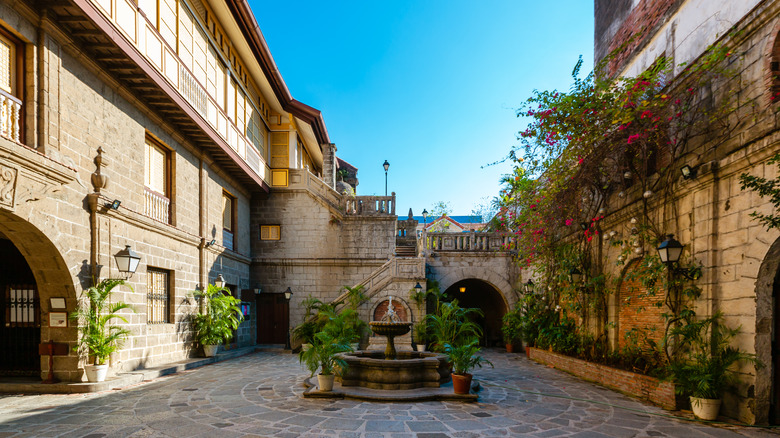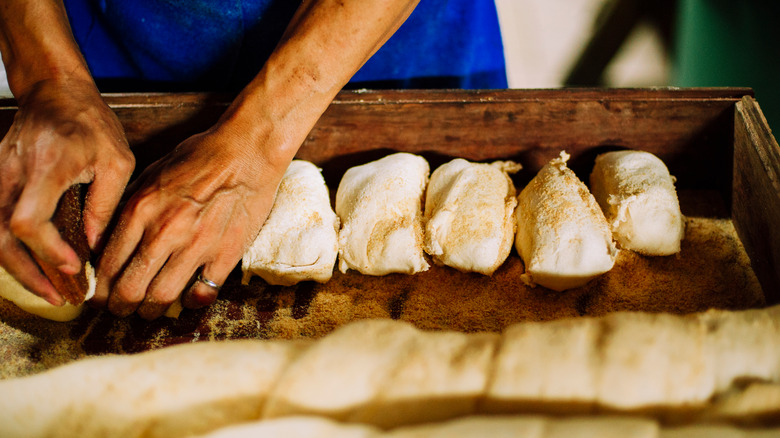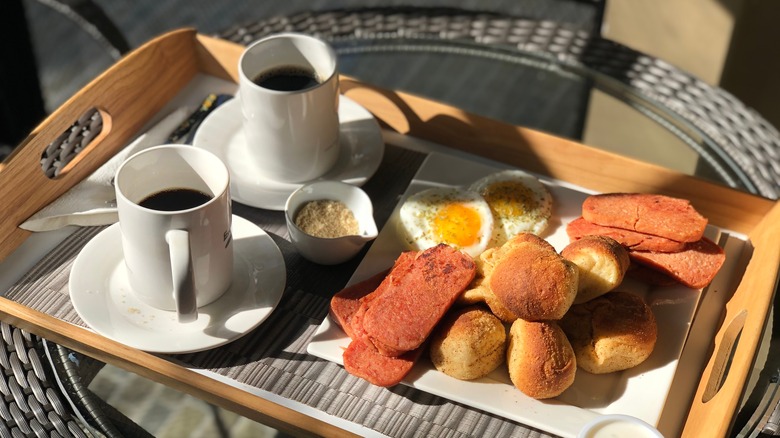Pandesal: The Filipino Bread Rolls You Should Know
It seems every country around the world has a bread they're famous for. In France, of course, it's the crispy, chewy, and extra-long baguette that sits inside fragrant bakeries, eventually finding its way into locals' tote bags. Italy prizes their dimpled and versatile Roman flatbread, focaccia, and India's beloved naan has become famous for its tandoor-baking process and unique bubbly and soft texture. However, there are many under-appreciated types of bread that are worth trying out.
The Philippines, for example, has a variety of delicious breads that have not yet gained global popularity. While the Philippines does not have a national bread, if it did, the humble pandesal would undoubtedly be it, according to Eater. This sweet and fluffy roll is a staple of the Filipino diet, often making an appearance as part of a traditional breakfast or midday snack in the country. It also has a fascinating history.
History of pandesals
The exact origins of the first pandesals are unknown. However, it is known that wheat was first introduced to the country by colonial powers. Portuguese explorers landed in the country in the early 16th century, and this aligns with when the first wheat-based bread was made there, according to Eater.
Shortly after the Portuguese made contact, Spaniards quickly colonized the Philippines in the mid-16th century, according to the Philippines Veterans Affairs Office. Along with the strong Spanish influence came strong ties to the Catholic church. The church, according to Eater, needed wheat to produce sacramental bread. This bread is used in the Christian tradition of the Eucharist, which is an important act of Christian worship, per Britannica. Eater says this bread was needed in the Catholic church's mission to convert the indigenous people. While this was one of the first types of bread introduced to the Philippines, however, it was quite different from the pandesal.
Eater cites Manila-based food site Pepper noting that the first pandesals were born out of the Spanish people's desire to create a bread similar to the baguette. They were, "made with whole wheat flour and baked in a pugon, a wood-fired oven that rests on the floor — also known as pan de Suelo." However, the modern pandesal is more fluffy and soft than these original breads.
According to World Grain, the word pandesal actually breaks down into the Spanish words "pan de sal", which translates to "salt bread."
Ingredients in pandesals
As the name points out, there is salt in these rolls, but not significantly more than most bread recipes. Most pandesal recipes call for roughly the same ingredients: all-purpose flour, salt, sugar, instant yeast, milk, butter, and eggs. Although, some substitutions can be made. For instance, some recipes suggest swapping butter for vegetable oil. Each ingredient provides a specific purpose for texture, flavor, and even color.
Serious Eats says that "oil can provide a tenderness in the bread, eggs add structure, flavor, and color, and milk and sugar contribute color while improving shelf life."
Once the dough is made, World Grain says it has an oval shape, "rolled in breadcrumbs, allowed to rest, and then cut into individual portions using a dough cutter." Then, it is proofed and baked. This combination of ingredients and shaping technique yields a sweet, soft yet chewy, and airy roll that is ideal for the breakfast table.
How pandesals are eaten
According to World Grain, pandesals are typically eaten as part of a classic Filipino breakfast. They are eaten hot and ideally fresh from a bakery or home kitchen. The most desired texture is a golden crunchy crust with a fluffy, soft, and slightly crumbly inside. This makes it perfect for dipping into a hot breakfast beverage, like coffee, which many Filipinos partake in.
Salty foods like butter or cheese are also commonly paired with a sliced bun for a unique sweet and salty flavor. Serious Eats also recommends serving them with "crispy Spam or Filipino-style sautéed corned beef." for a filling, meaty treat.
Jam can also be smeared on a roll as an extra sugary indulgence. This popular method can be eaten for breakfast as well, but also as an afternoon snack, according to World Grain. There are few things better in this world than a warm roll served with a rich butter or tangy cheese, so for your next breakfast try out some pandesals to start your day right.



